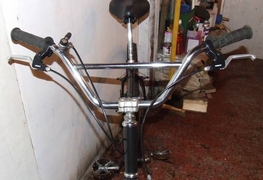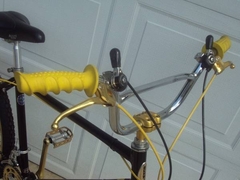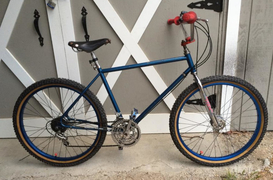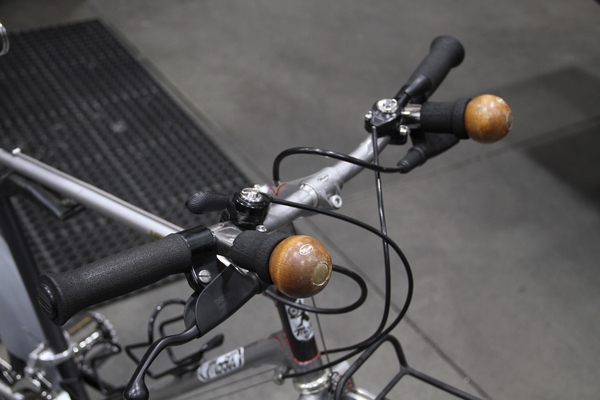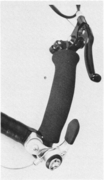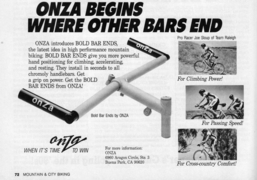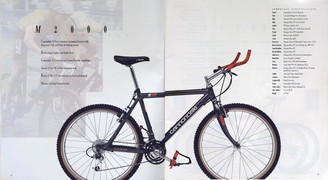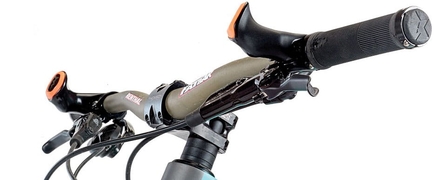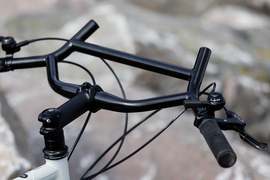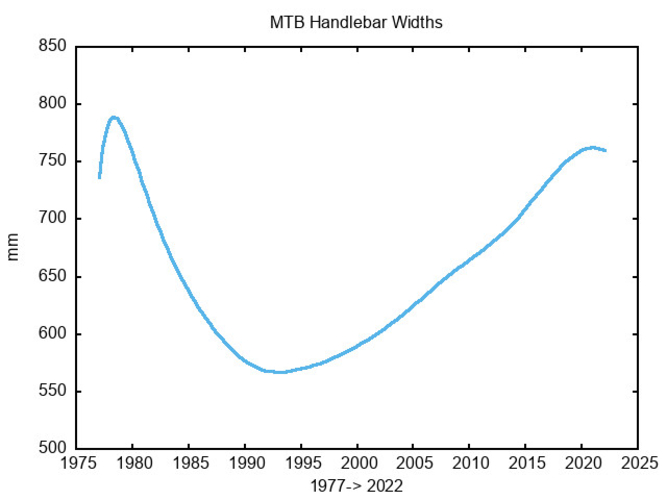Table of Contents
..
..
When Tom Ritchey introduced bullmoose bars in 1980, they instantly became standard equipment for all new MTBs, defining today what a vintage mtb should look like. The inspiration for this design came after Tom suffered an equipment malfunction while racing down Repack.
MBA: What was your first Repack race like?
Tom Ritchey: I went up there and had kind of a quick yell-out and said, “Whose bike can I borrow?” and I ended up borrowing Wende Cragg's, which basically was just about as classic as any of the bikes that you’ve seen from that kind of Schwinn-heritage category. I hurled myself into the race and down the hill, and—oh, shoot, just a couple of minutes into the race the handlebars rotated. It was pretty much unrideable [laughs], and I ended up getting off, jerking on the handlebars to get them back to straight and got to the bottom. It really wasn’t much of an experience, other than that it initiated my thought process that had to do with the first Bullmoose handlebar and the one-piece system that I knew was needed for a purpose-built, off-road bike.
And so, really, the Repack experience taught me that the handlebars were terrible. The weight of the bikes was terrible. The pickup-truck idea of riding wasn’t who I was. In order for me to do the right thing, I needed to figure out a way to make these truly cross-country bikes. That's what I did. Tom Ritchey, as quoted in Mountain Bike Action
John Finley Scott, an early investor of both Tom Ritchey and of Kelly/Fisher MountainBikes, came up with the name “Bullmoose” because they reminded him of antlers 1) and as a tribute to Teddy Roosevelt.2).
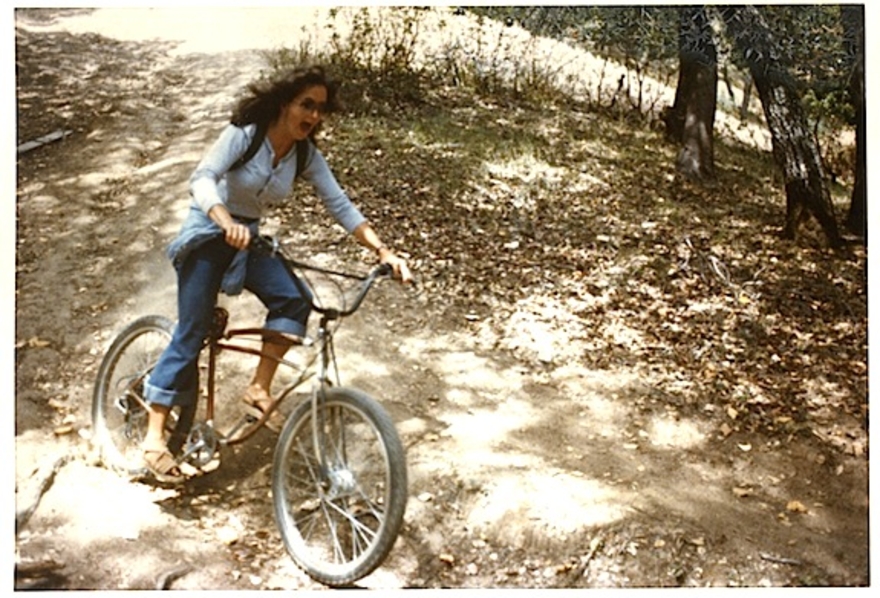
Wende Cragg, descending Repack on a 1940 Schwinn Excelsior modified by
Alan Bonds.
localmatters
Bullmoose Evolution
- The original Bullmoose bars were either 26“ or 28” wide and weighed 896g if they came with the integrated quill. Ritchey also created a weight saving double wedged quill which simultaneously gripped the stem and the steerer tube.
- Starting in 1983 MountainBikes optionally sold Nitto made fillet brazed bullmoose bars for roughly 1/3 the cost 3)
- Although the Ritchey catalog doesn't state this, starting in 1982, the lower end models such as the Mount Tam, came with TIG welded Nitto bullmoose handlebars.
- After the Ritchey/Kelly/Fisher dissolution, Ritchey referred to bullmoose bars as “Twinstrut” while Fisher MountainBikes continued to use the “bullmoose” name, now appended with a ™ symbol.
- The last vintage MTB in this timeline to use bullmoose bars appears to be the Swiss 1992 Ferraroli Authier. After that, the focus was on making narrow bars light weight out of aluminum, titanium or carbon.
- Nitto recently continued to make the Bullmoose bars and it remains available online at places such as: velo-orange. 28“ wide, 15' sweep, 693g (no quill). Or a fillet brazed Nitto version was available at Rivendell, 26” wide, 30' sweep, 868g (full quill). 4)
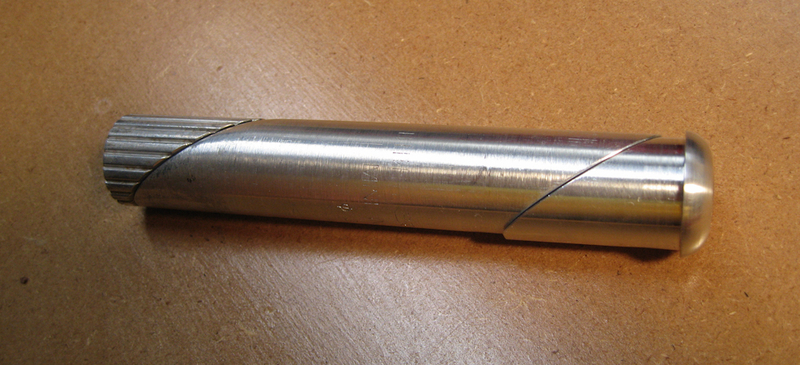
1980 Ritchey quill adapter, using a double wedge, allows for the bullmoose stem to firmly grab the steerer tube.
vintagemtbworkshop
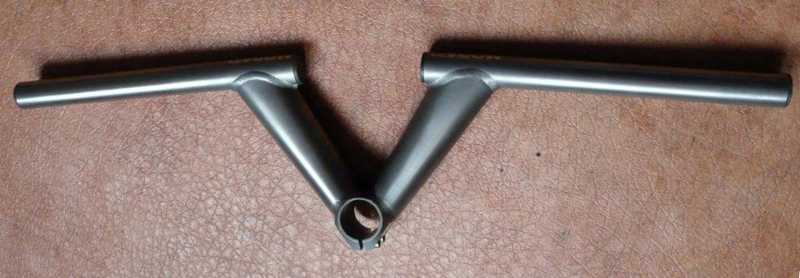
2011 Morati Titanium M-bars, 560mm wide, 310g
facebook

In 1980, the “Bullmoose” name had yet to be coined.
1980 Ritchey Catalog, page 1 vintagebicycledatabase
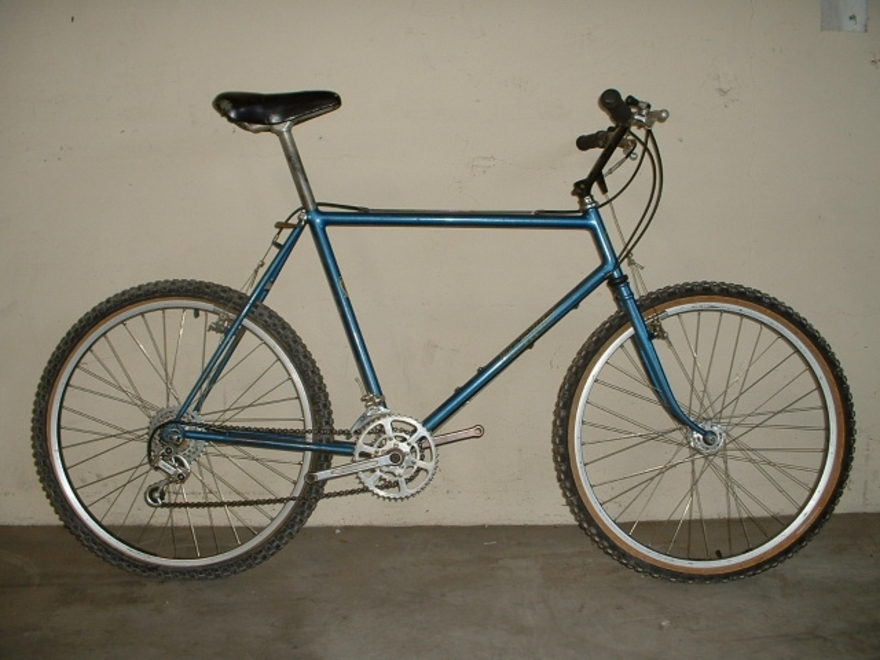
1978 Ritchey #1, upgraded with 1980 bullmoose bars.
Tom Ritchey's personal bike.
vintagebicycledatabase
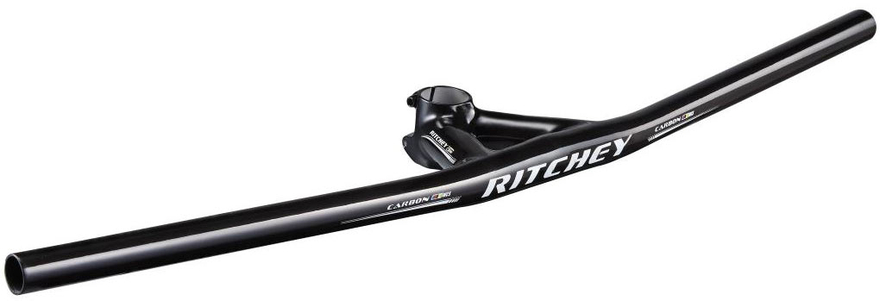
2015 Ritchey WCS Carbon bullmoose handlebar-stem combo.
Size: 720→740mm wide with a 9→11cm stem.
280g.
$299.95
bikerumor

Magura L476-21 bars with crossbrace on a 1979 Ritchey
facebook
..
Motocross
Before Bullmoose bars, mountain bikes were usually equipped with motocross handlebars. Both motocross and mountain bikes needed the strength to tame the stresses fighting the rider to keep things going straight. Motocross offered affordable strength with perhaps more weight than needed for a bike.
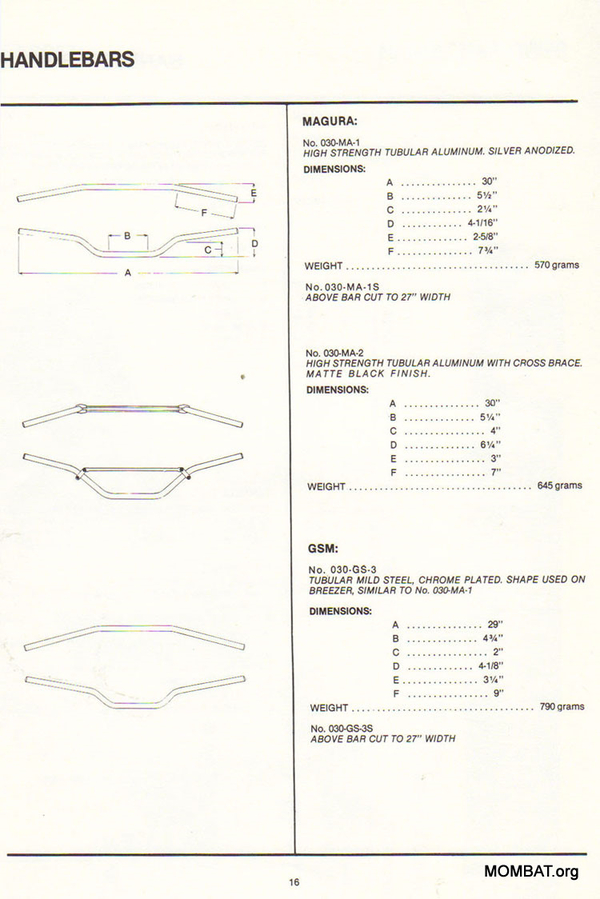
1980 Trailmaster/Cove Bike Shop Catalog
mombat
Magura, Magura or GSM - nothing else would work.
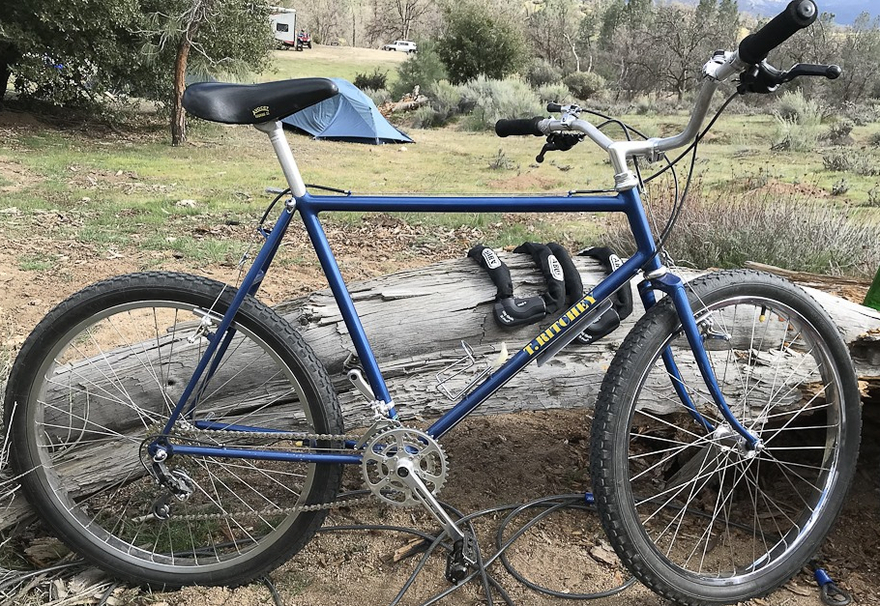
1979 Ritchey equipped with Magura L476-21 motorcycle handlebars.
facebook
Prior to 1980, the best handlebars were wide, flat & light motorcycle handlebars from Magura. Almost all Series I & II Breezers used Magura handlebars. See a gallery of 52 different Breezers: Vintagemtbworkshop Breezer gallery.
MX & MTB
Motocross handlebars found on early mountain bikes.

The 1977 Breezer #1 used a GSM Motorcycle (Germany) handlebar with an SR stem.
smithsonian
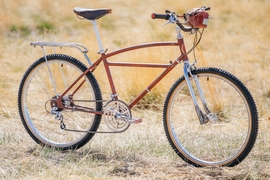
1980 Cook Bros Racing Cruiser. Modified by Steve Cook with Magura bars.
theradavist
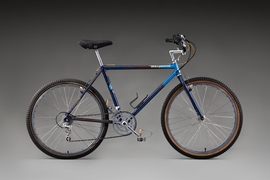
1980 Koski Trailmaster, with Maguras. Magura and GSM were the only bars which Trailmaster would build with.
sfomuseum
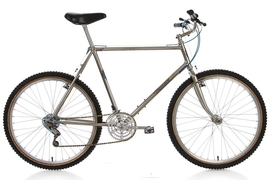
1982 Breezer Series III. Joe stuck with motocross handlebars for all of his mountain bikes. See Breezer Gallery. theproscloset
BMX
Before Bullmoose bars, mountain bikes were spec'd with handlebars from the motorcycle, road bike and BMX parts bins. Mountain bikes needed strength and lightness. BMX gave cheapness and motorcycles the strength. Many BMX makers shifted to making MTBs with very BMX-like styles. BMX bars were usually high risers, as the bikes were tiny with 20-24“ wheels to make them light weight and nimble (and affordable.) Note that a typical 1979 Schwinn BMX bike weighed 28.5 pounds, while Ritchey's 1978 MTB #1 weighed 30 pounds 5). But Ritchey's bike, at $1400, cost 7x more than a Schwinn BMX at $197. 6) Even 26” BMX bikes used the same bars, which helped with control and pumping rollers and berms. Or perhaps it's just tradition?
BMX started in the late 50's in the Netherlands7) and moved to the US in the 60's in pretty much the same format as it is today: kids racing small, off-road bikes across a short bumpy dirt course. Mountain biking is similar, but also needs to go up hill (wide gearing and lightness) and faster down hill (larger wheels and strength.)
Bicycle Motocross (BMX) originally started when children began imitating motocross riders on their bicycles. Old bikes were used on roped off tracks with turns and jumps which gave the pedal powered fanatics a sensation of racing motocross. The number plates on the bicycle and the trophies at the finish line made it feel real. UCI archive
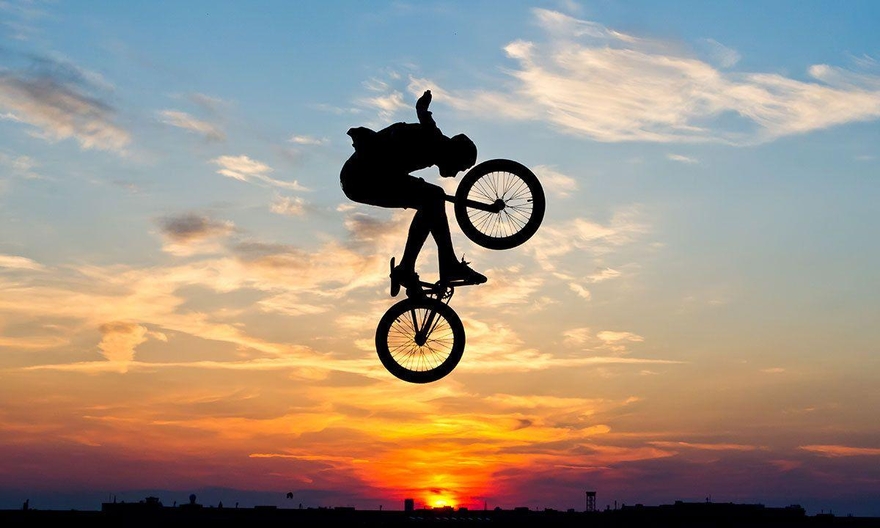
“Look Mom, no gears!”
wallpapercave
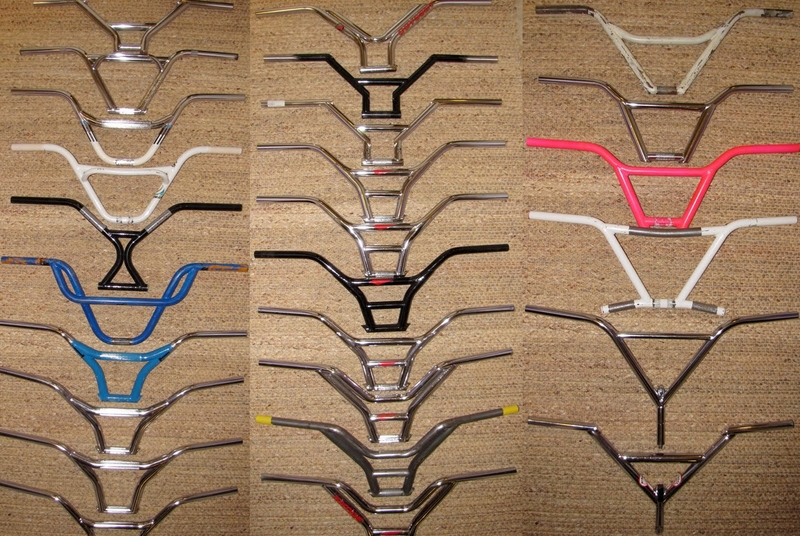
Vintage BMX bars
snakebitbmx
BMX & MTB
BMX handlebars found on early mountain bikes.
 Mert Lawill designed bar and stem on a 1978 Lawwill-Knight Pro Cruiser.
mombat
Mert Lawill designed bar and stem on a 1978 Lawwill-Knight Pro Cruiser.
mombat
Slingshot Stems
In 1982 Sakae Ringyo (SR) introduced two new “mountain bike stems”: the MTS-100 “slingshot” and the MTS-101 “golf putter.” The MTS-100 mated a typical BMX 4-clamp stem with a Bullmoose stem and came up with the Slingshot. It mimicked the look of bullmoose bars with more adjustability, lower cost and perhaps eliminating Ritchey's observed Repack rotation problem with the two clamps and four bolts on the bars8). Slingshot stems continued to be used long after Bullmoose bars faded from use in the mid 80's.

1983 Sakae Ringyo catalog, Page 10.velo-pages
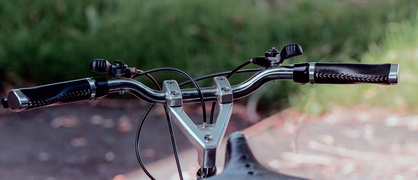
SR Sakae Ringyo MTS-100 reddit.
Univega was perhaps the first to use the new slingshot stem.
The best selling bike of all MTBs from 1982→1987 was the Univega Alpina range, which used the MTS-100 from 1982→84 and then switched to the Nitto V-1 slingshot stem from 1985→86.
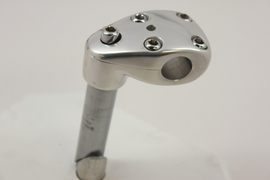
Stem from a 1982 Specialized Stumpjumper. Prettier than the MTS-101.
bikerecyclery.
Specialized used own-branded parts and their BMX 4-bolt stem was spec'd on Stumpjumpers from 1981→84.
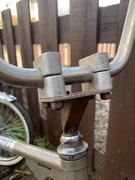
1976 Cook Bros. Racing BMX. Four clamp stems had been used on BMX since the 60's, but the slingshots were new to MTBs.
bmxmuseum

Farr Headspace stem, available today at: ridefarr, pic from
bikepacking.
Drop-bars & MTB
Most early racers were comfortable with drops: they're aero, have more hand positions, easier to shift fore and aft for climbing, were easily available, looked cool and racers were used to winning with them. Yet, MTBs are defined as having flat bars. However, if John Tomac, the winningest racer in the history of MTB, was able to podium dozens of times on downhill courses using only drop-bars, it's worth allowing them.
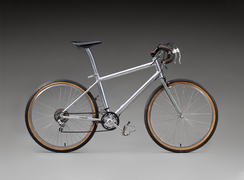
1978 Cunningham CCPROTO. All Aluminum. Probably used SR Sakae Road Champion handlebars at ~420mm, which he spec'd on later Indian builds. Weight: 24 pounds.
sfomuseum
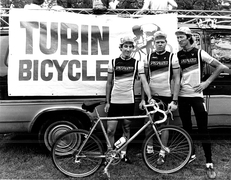
1984 Specialized Team Stumpjumper 9) being held by Dave McLaughlin, who secretly swapped the flat bars for drops just before the race domesticbikes.
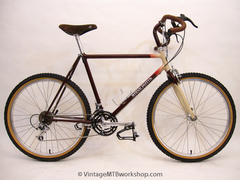
1987 Steve Potts. Potts custom builds often installed wide flared drops (575mm) for discerning customers who wanted the best of both worlds vintagemtbworkshop.

1988 Bruce Gordon Rock 'n Road. This is a pure cyclocross bike and the forerunner of modern gravel bikes. Flared Nitto bars, probably 440mm wide.
brucegordoncycles
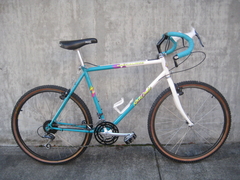
1989 Specialized RockCombo. Perhaps the first mass produced drop bar MTB. Specialized had the right idea, but nobody wanted the combo. Yet. classiccycleus.
John Tomac
The history of MTB handle bars via John Tomac's career.
He has won more mountain bike races than anyone in the sport, and done so at every level and in all aspects: cross-country, uphill, downhill, even trials. https://mmbhof.org/john-tomac/
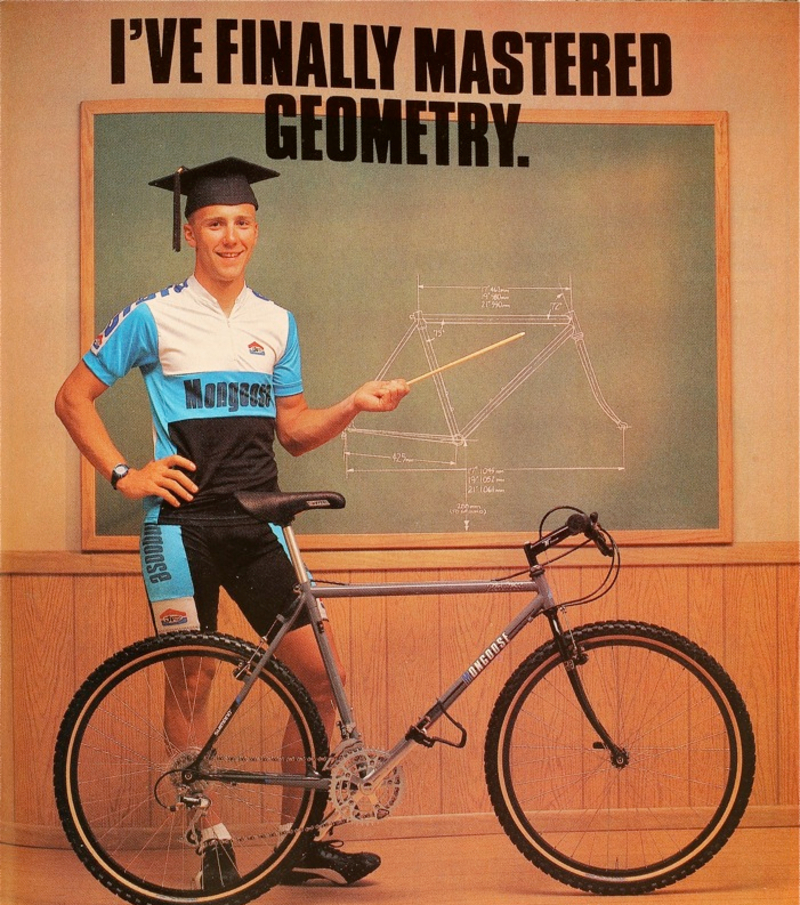
Tomac, age 19, fine tuning bike geometry. 1988 Mongoose ad.
mbaction
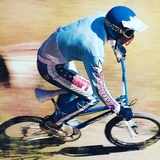
Tomac raced BMX before turning pro with Mongoose in 1987. This is newer pic to sell the retro BMX Cycle Craft. Those bars are too wide and flat to be vintage.
facebook
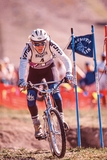
1988 Mammoth Mountain dual slalom, with Tomac riding a 24“ Mongoose BMX (with gears, as the course had an uphill section. Note the wool socks…) Tomac won the overall dual slalom for 1988 on this bike.
mbaction
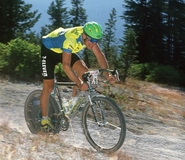
Winning overal NORBA title for the 3rd time in a row in 1991. Cinelli 440mm wide drop-bars. Tomac raced on drops for many years after switching from BMX and later becoming a road racer. mbaction
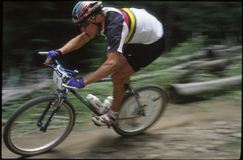
1992 on the way to 2nd overall XC World Cup. Now sporting bar ends.
cyclingtips
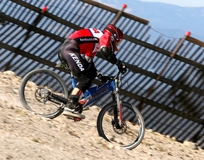
Tomac winning the 2005 Mammoth Kamikaze on an eponymous Magnum 204 DH bike, with 760mm handlebars. mbaction
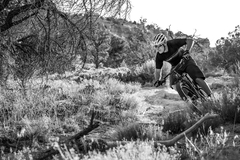
John Tomac, still looking cool, even with 780mm. 2020 photo by Skyler Bishop skylerbishop


